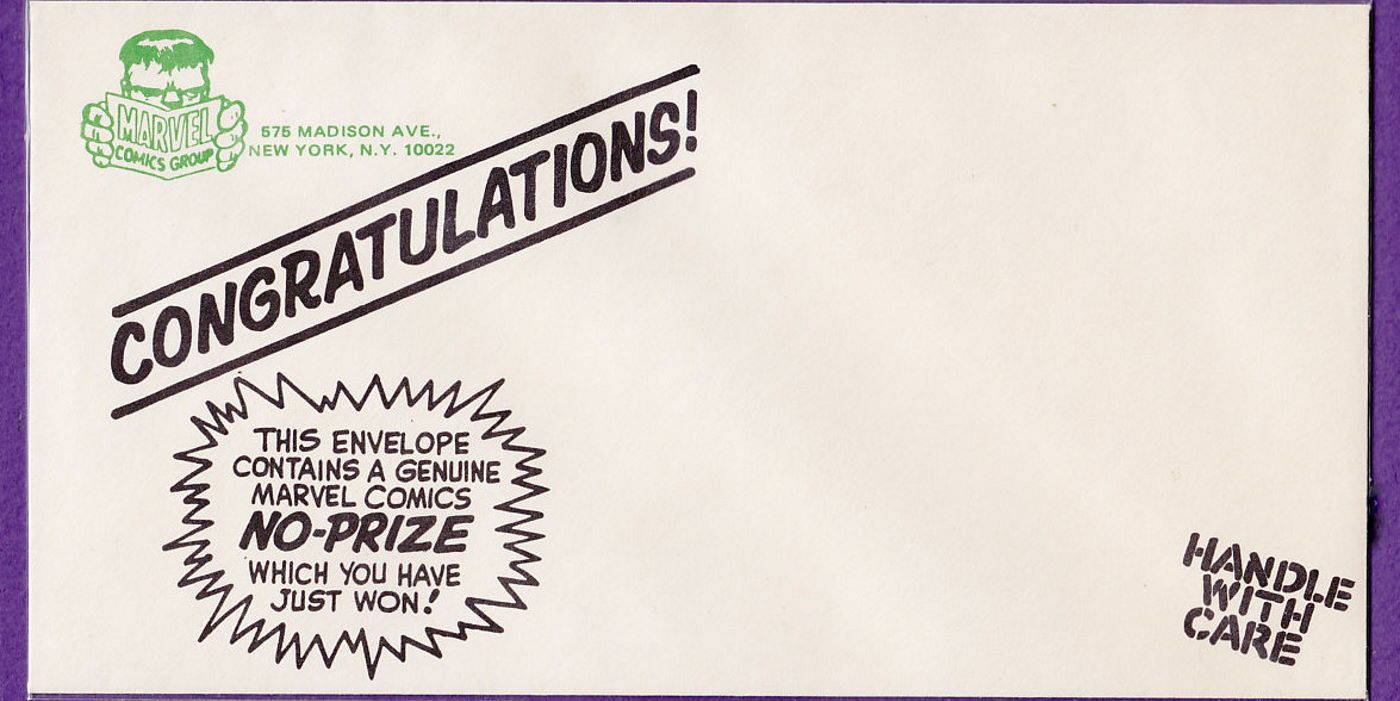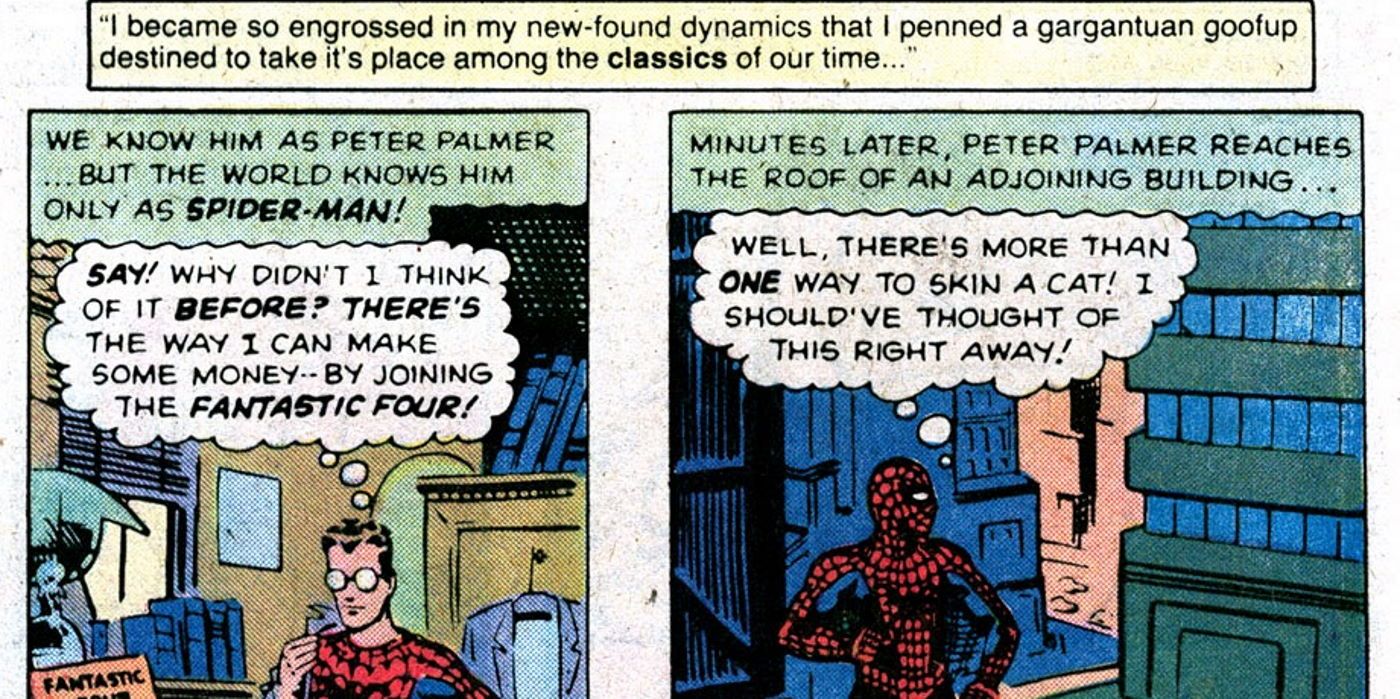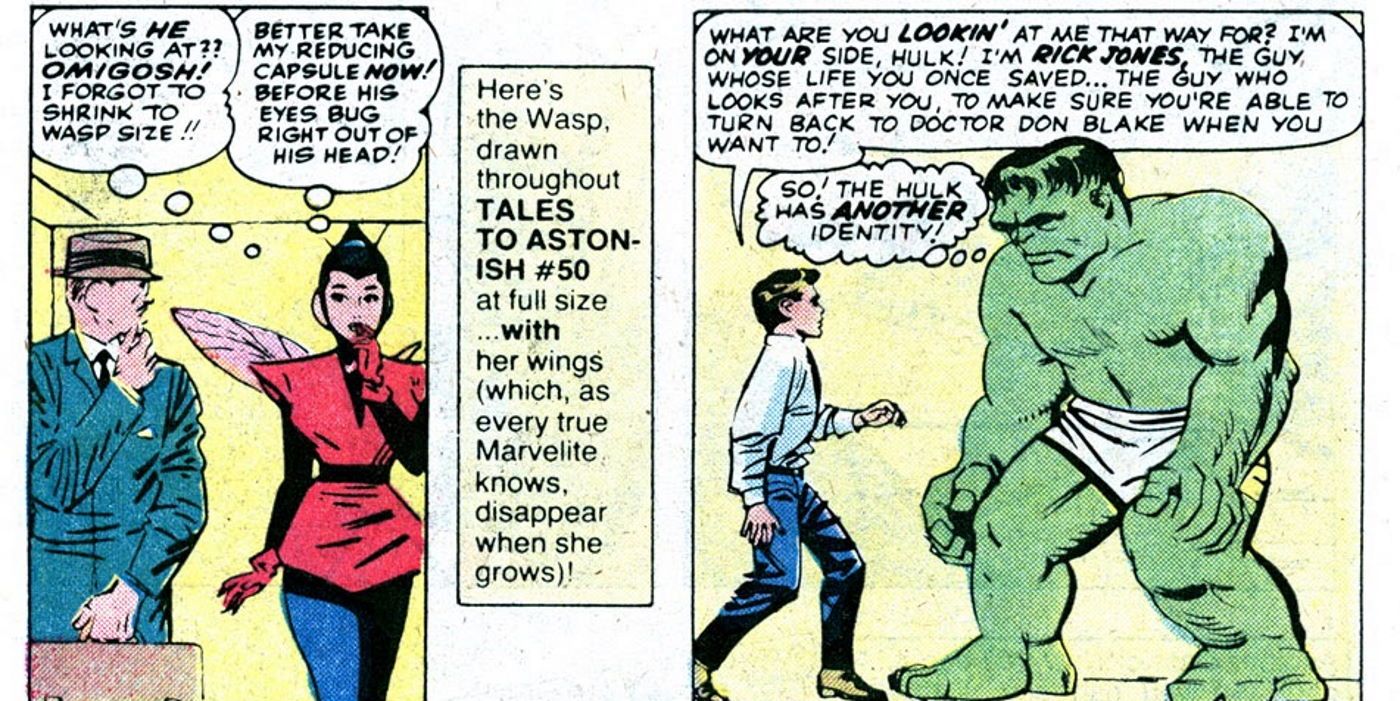Spend some time on Facebook or YouTube, and you’ll come across posts and videos by and for comic book fans pointing out flaws and plot holes in the latest comic books and movies from Marvel, DC, and other publishers. While most fans express their enthusiasm for films and comics positively, some take delight in pointing out all the mistakes and errors writers, artists, and editors made in a story and devote lengthy videos and articles ridiculing them.
In truth, most of these flaws can be easily overlooked. Comics are produced on a deadline, after all, and coloring errors, grammatical mistakes, and art goofs do pop up from time to time. Even so, Marvel Comics once recognized fans’ tendencies to find errors – and gave them highly coveted prizes for pointing out a mistake… and then fixing it for them.
Known as “No-Prizes,” these awards were dreamed up by Stan Lee who wanted to offer prizes to Marvel readers who sent in fan mail. At the time, other comic book publishers offered cash prizes, free comics, and other rewards if a reader wrote in and pointed out a continuity error in a story. While Marvel didn’t have the budget to offer such prizes on a regular basis, Lee came up with a unique alternative.
Instead of sending cash or comics, starting in 1967, Marvel sent readers pre-printed sealed envelopes that read, “Congratulations, this envelope contains a genuine Marvel Comics No-Prize which you have just won!” Since the prize was a “No-Prize” the envelope was naturally empty, although some readers wrote in to complain that their “no prize” must have fallen out of the envelope. Other readers enjoyed the joke prize, however, and began sending letters full of nit-picking critiques of the comics, hoping an editor would send them a coveted “No-Prize.” Marvel even produced a one-shot comic titled The Marvel No-Prize Book: Mighty Marvel’s Most Massive Mistakes which re-printed panels full of art mistakes and writing errors pointed out by past “No-Prize” winners.
Many of the errors went back to the days when Stan Lee wrote most of Marvel’s books. Lee has admitted that he had a notoriously bad memory when it came to names, which is why he gave many of his characters alliterative names like “Peter Parker” and “Bruce Banner” hoping that would help him remember. Unfortunately, with so many scripts to write, mistakes soon cropped up. In early issues of The Amazing Spider-Man, for instance, Lee referred to Peter Parker as “Peter Palmer” in multiple panels. Lee also accidentally had Doctor Octopus call Spider-Man “Super-Man” in The Amazing Spider-Man #3. Readers pointed out other slips – like when Lee confused the Hulk’s girlfriend Betty Ross with Spider-Man’s girlfriend Betty Brant, or when Lee referred to Bruce Banner as “Bob Banner” (a slip that would eventually cause other writers to rename Banner “Robert Bruce Banner”).
Other panels revealed hilarious art mistakes – like the time Hulk’s enemy Captain Barracuda looked through a periscope… even though the eye he was using was already covered with an eye patch. There was also a panel showing the Hulk with three toes instead of five, and an odd X-Men group shot where Iceman inexplicably developed the power to create ice cream out of thin air. While finding errors may have started out in the spirit of fun, however, pretty soon readers became so focused on finding errors in comics that many letters began pointing out all the flaws of the comics rather than commenting on the stories themselves. In response, editors adopted a new policy requiring readers to not only point out a continuity mistake… but also came up with a creative explanation for why that mistake was not a mistake. This led to several readers constructing creative fans theories to fix plot holes.
In one issue of The Incredible Hulk, for instance, a fan wrote in after noticing that the artist had drawn shoes on the Hulk’s wife Betty Banner and her friend Marlo Chandler, but left them out mid-way through a chase scene. The fan suggested that both women had survived an off-panel mugging attempt during the chase, and had to take off their shoes to beat up the mugger. Since women in New York have been known to use their shoes as defensive weapons, the editor found this a plausible explanation, and sent out a No-Prize.
Another reader wrote in to The Amazing Spider-Man, pointing out a scene where the artist drew Peter Parker meeting Flash Thompson and his friends while accidentally drawn wearing his Spider-Man boots. None of Peter’s friends seemed to notice, so the reader speculated that Spidey was so popular in the Marvel Universe that “Spidey socks” were on sale for any New Yorker to wear, allowing Peter to get away with exposing parts of his costume. Sometimes, the explanations could get extremely technical. One fan questioned why the armored Guardsmen at the supervillain prison The Vault had to turn off Eddie Brock/Venom’s special sonic cage to enter when the soundwaves shouldn’t affect anyone except symbiotes. The reader offered an extensive explanation on how the Guardsmen armors contained a design flaw that also made them vulnerable to sonic waves.
By the late 1990s, however, Marvel was encountering financial issues and the number of No-Prizes awarded declined. The criteria for getting a No-Prize also changed as recipients now had to demonstrate “meritorious service to Marvel above and beyond the call of duty.” Editors encouraged readers to donate comics to hospitals or create useful cross-title indexes of a character’s appearance. Creative fan theories were still accepted – but only for fixing major continuity errors. By the early 21st century, No-Prizes were being awarded digitally, again for “meritorious service to Marveldom.”
Having a great love of movies and comics does encourage fans to re-watch and re-read their favorite stories multiple times – which can lead to spotting continuity errors. When finding such errors becomes the primary aim of fans, however, much of the original enjoyment of the stories can fade. By encouraging fans to construct theories to weave their mistakes into continuity, Marvel was getting fans to exercise their creativity and rediscover the joy of exploring imaginary worlds. Nit-picking may be an inescapable aspect of fandom, but being able to have fun reading amazing stories, even if they’re told imperfectly, is important as well.




